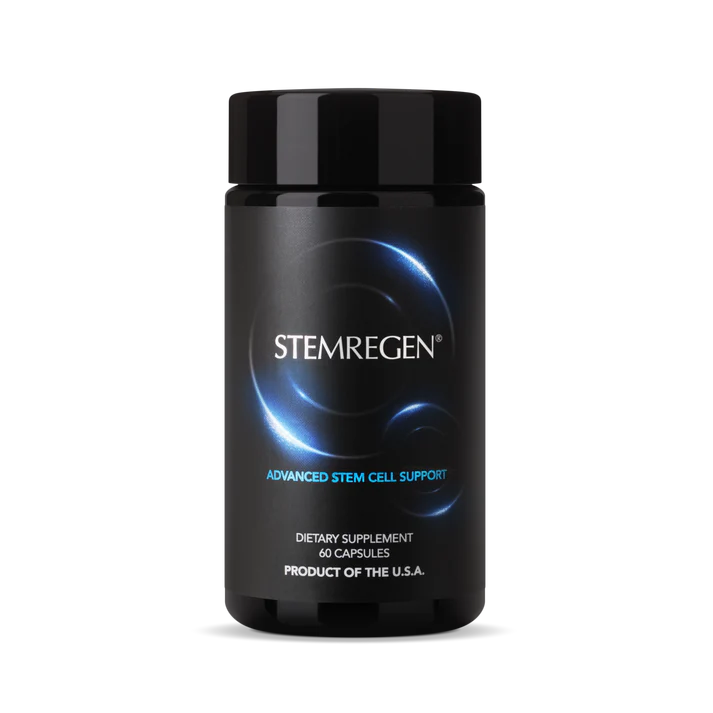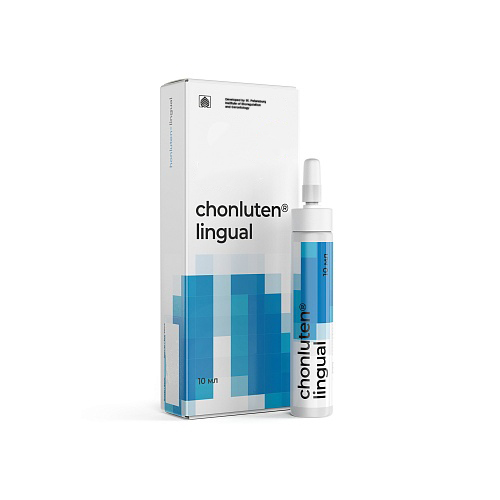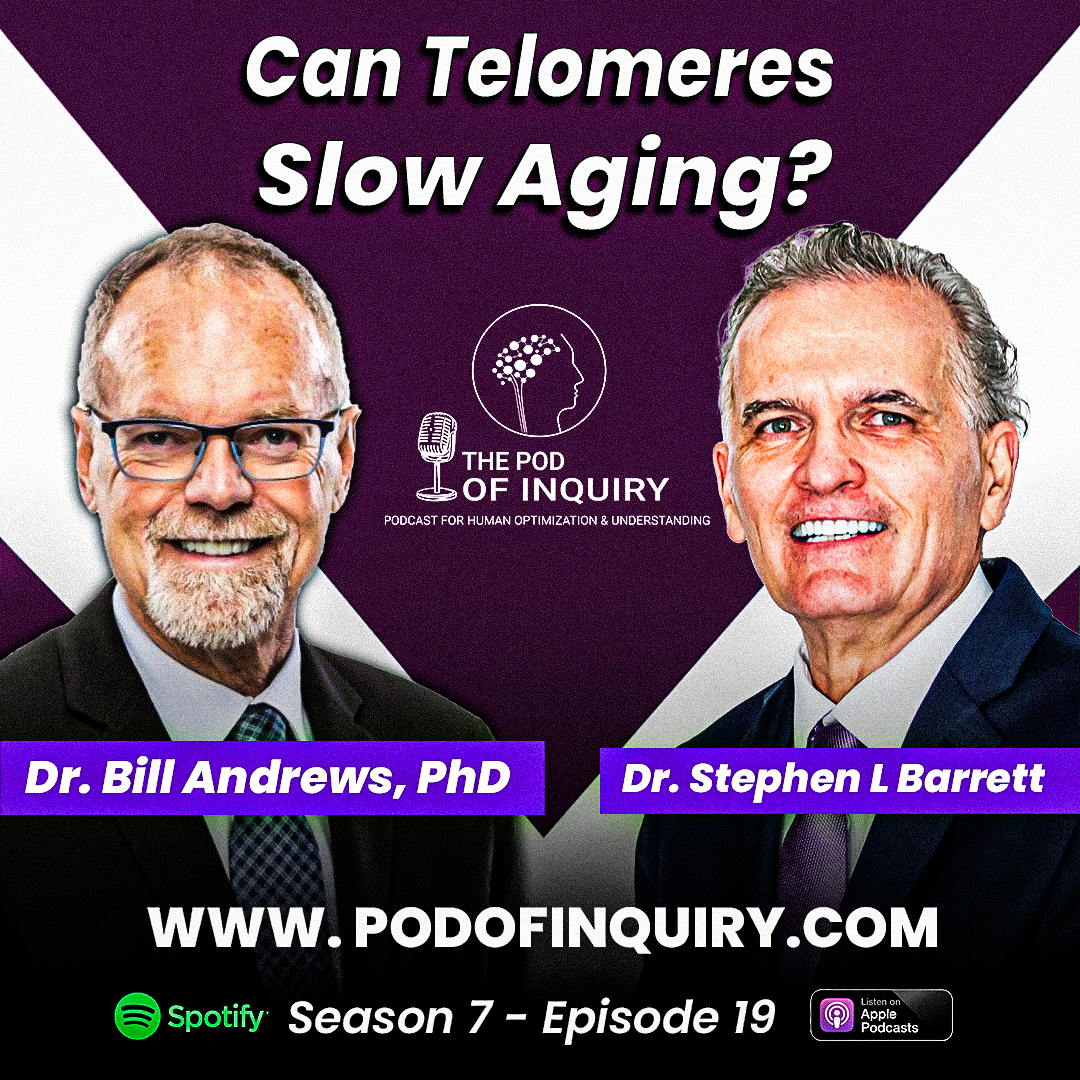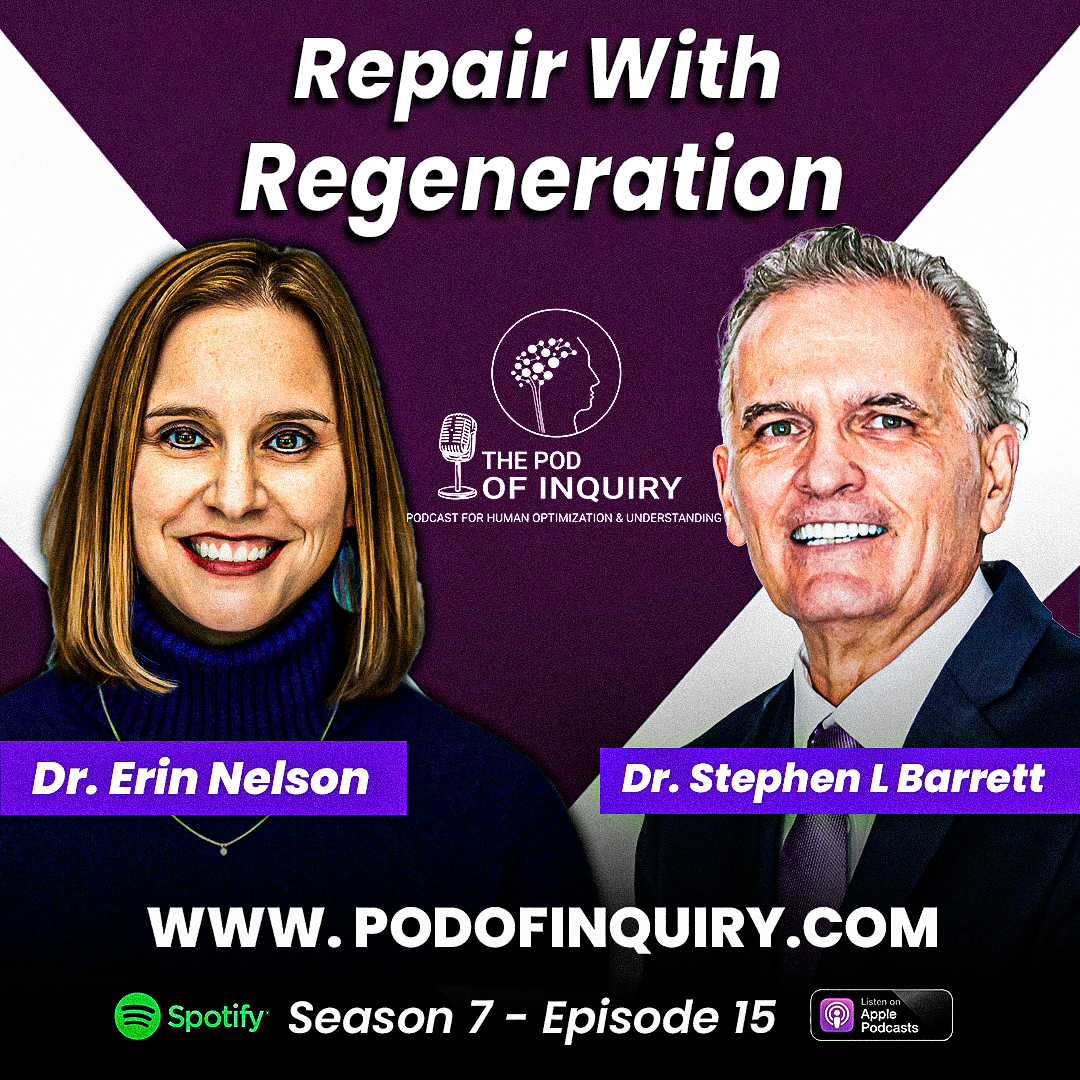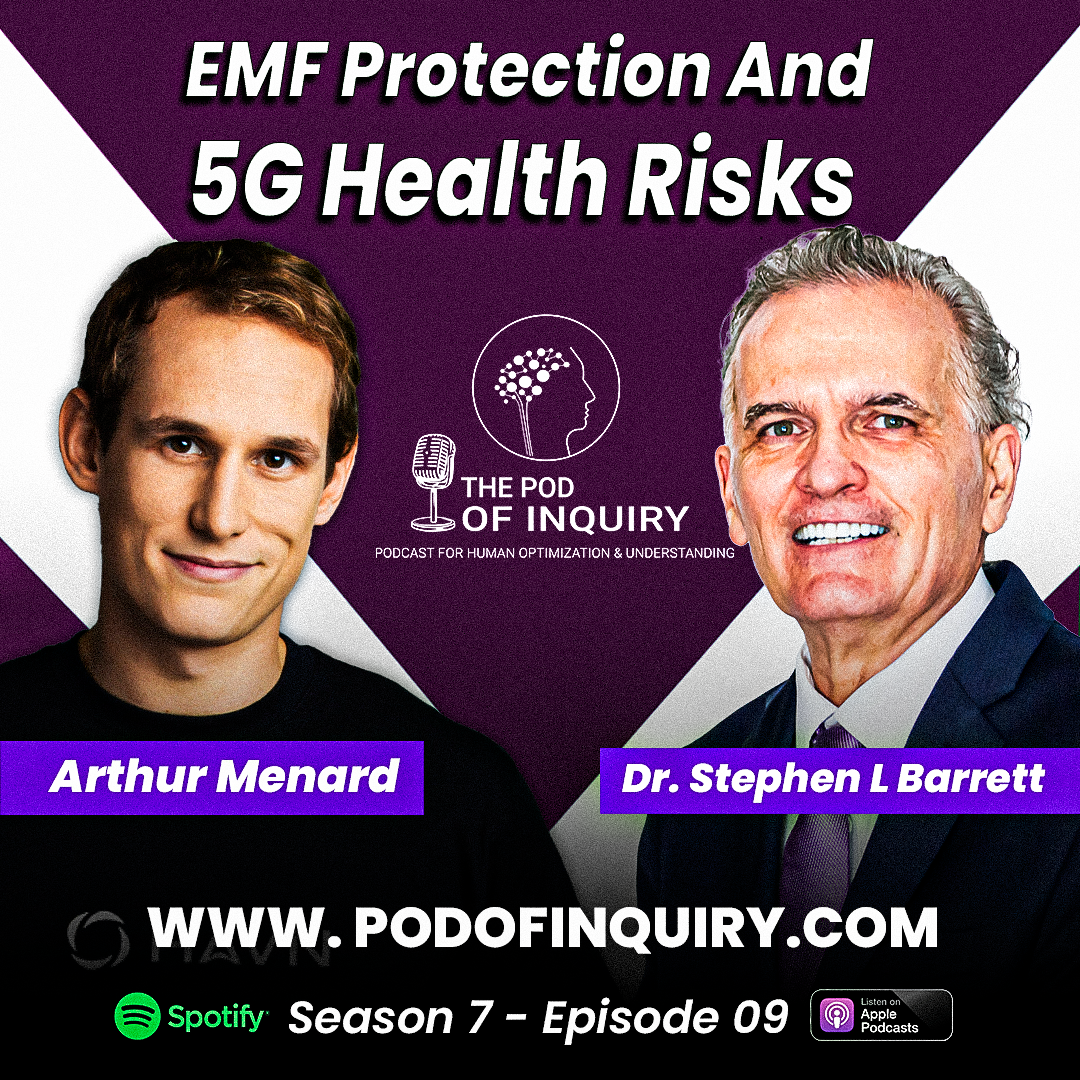Most PEMF content explains the science (important, but not immediately helpful). This episode with Dr. Bob Dennis —the brilliant PhD engineer behind Flux Health will teach you how to actually use your PEMF device —is pure implementation gold.
In This Episode, You’ll Learn:
• The counterintuitive intensity secret that solves 95% of “it’s not working” issues
• Exact coil placements for spine, digits, and nerve injuries (your instincts might be wrong)
• Why lower power often outperforms higher power
• The “Omni 8” protocol: your one-size-fits-most solution
• Pre-surgical PEMF setups for faster recovery
• Vagal nerve stimulation for anxiety and chronic pain
At age 40, Dr. Dennis’s spine looked like a 65-year-old’s. After 20+ years of daily PEMF use, at 61 his spine now matches that of a 50-year-old. That’s not just slowing aging—it’s reversing it.

Watch The Podcast
Listen to The Podcast
Also available on
Guest Biography

Bob Dennis, Ph.D
Bob Dennis, Ph.D. – is a Scientist, engineer, inventor, and retired firefighter based in Chapel Hill, NC. Born in 1963 in Highland Park, MI, he holds a mechanical engineering degree, two master’s degrees, and a Ph.D. in Biomedical Engineering. He is a Tenured professor at UNC School of Medicine with a joint appointment at NC State, and former faculty at the University of Michigan in Mechanical Engineering, Biomedical Engineering, and Surgery. He is a former Visiting Research Scientist at Harvard and MIT; co-founded MIT’s Biomechatronics Group with Hugh Herr. Founder of several biomedical companies, including Cortical Metrics LLC and Micro-Pulse LLC.
Bob served as Fire Chief of New Hope Volunteer Fire Department; certified firefighter, medical first responder, and Technical Rescue Technician until 2009. Consultant to ~60 companies, NASA, U.S. military branches, and DARPA. He holds dozens of patents and published ~60 scientific papers in tissue engineering, achieving first demonstrations such as functional nerve-muscle constructs and bio-hybrid swimming robots. Early career included designing missile guidance system components for Hughes Aircraft during the Cold War.
His current research focuses on PEMF applications for inflammation, chronic pain, and biofluid viscosity modulation. Co-hosts the Grumpy Scientist YouTube show with Mark Tommerdahl.
Show Notes from this episode
00:00 – 02:03 | Introduction
- Welcome and guest introduction
- Dr. Bob Dennis background: PhD, owner of Flux Health and Micro Pulse
- Host’s personal experience with PEMF technology
- Episode focus on implementation and practical usage
- Reference to previous episodes (Season 1 and Season 5, Episode 5)
02:03 – 03:49 | Host Introduction Continued
- Technology effectiveness for musculoskeletal injuries
- Mention of discount code: SBPOI (Stephen Barrett pot of inquiry)
- Website: micro-pulse.com
- Focus on M1 device implementation
03:49 – 05:50 | Community Resources and Test Disk
- Flux Health Forum introduction (flux-health.co)
- Daily forum monitoring by Dr. Dennis
- Community of experienced users (8-10 years)
- Test disk functionality for confirming device operation
05:50 – 08:22 | M1 Quick Start Guide Overview
- Device setup demonstration
- 18-second power-up sequence
- Two adjustable parameters: intensity (1-15) and pulse protocol
- Fixed waveform shape (not user-adjustable)
- Default settings: Omni eight protocol, intensity level 9
08:22 – 12:30 | B5 C5 vs Omni Eight Protocols
- B5 C5 Protocol: Classic protocol based on A9 and P2
- 5 pulses per second with 100 pulse bursts
- Unipolar positive and negative pulses
- Combination of slow and fast pulses
12:30 – 17:04 | Regenerative Theory and Omni Eight
- Developmental pulse pattern theory: Based on fetal neuromuscular development
- 5 PPS targets slow-twitch fibers, 100 PPS targets fast-twitch fibers
- Pro-development vs. decay signals
- Omni Eight: “All-in-one” protocol for general use
- Anti-habituation properties through pattern variation
17:04 – 20:01 | Intensity and Habituation
- Counterintuitive finding: Lower intensity often more effective
- 95% of effectiveness issues resolved by turning intensity DOWN
- Start at intensity level 9 (factory default)
- Progressive response improvement over years at lower intensities
20:01 – 21:17 | Rest Protocols
- Bottom blue box protocols include 5-minute rest periods
- Continuous vs. intermittent stimulation options
- Pain management considerations during rest periods
21:17 – 29:17 | Coil Placement Physics
- Copper coil demonstration: 42-wire solenoids
- Magnetic flux line orientation principles
- Side-by-side placement: Circular loop flux pattern
- Stacked placement: Fountain/mushroom flux pattern
- Tissue-specific orientation matters
29:17 – 33:04 | Placement Guidelines by Body Part
Spine: Horizontal placement (infinity sign pattern) – NOT along spine Digits/Extremities: Sandwich above and below – NOT wrapped around General rule: Stack bumpy-to-bumpy for 80% of applications Maximum distance: Up to 11 inches apart (tested on hip)
33:04 – 36:35 | Peripheral Nerve Applications
- Post-surgical nerve repair/decompression applications
- Case study: Peroneal nerve compression recovery
- Stacked coil placement for superficial nerves
- Depth penetration through tissue transparency principle
36:35 – 41:53 | Penetration Physics and Schumann Resonances
- Faraday’s Law application: Induced electrical field proportional to magnetic flux rate of change
- Tissue transparency to magnetic fields
- Energy deposition at tissue disruption sites
- Schumann Resonances (7.83-33.8 Hz): Earth’s ionosphere frequencies from lightning strikes
41:53 – 44:51 | Earthing/Grounding Discussion
- Schumann resonance misconceptions
- Pattern recognition in absence of data
- Experimental effectiveness regardless of exact frequency matching
- Importance of pulse shape over specific frequencies
44:51 – 50:10 | Research Protocols and TMS
Red box protocols: Single pulse rates for research replication Subclinical TMS: <5% energy of clinical TMS devices Safety prioritization: Avoiding motor threshold stimulation
50:10 – 57:02 | TMS Safety and Applications
- Clinical TMS safety profile discussion
- 10 Hz as standard frequency for depression treatment
- 1 Hz for anxiety treatment
- Subclinical approach for safety
57:02 – 58:29 | Vagal Nerve Stimulation and Brainwave Entrainment
- Anatomical landmark guidance
- Periauricular and cervical placement options
- Heart rate variability as feedback metric
- Brainwave protocols: Alpha, Beta (1-3), Theta, Delta, Gamma
58:29 – 1:00:32 | Clinical Applications Summary
- Musculoskeletal pain and inflammation
- Post-operative nerve surgery applications
- Schumann resonance “earthing” applications
- Vagal nerve stimulation for chronic pain and anxiety
- General Omni eight protocol recommendation for pain
1:00:32 – 1:04:55 | Usage Duration and Frequency
Initial use: 10 minutes to test tolerance (1 in 2000-3000 don’t tolerate) Regular use: 30 minutes to 1 hour daily minimum Extended use: Up to 16 hours daily (speaker’s personal use) Effects duration: 3 hours to 1-2 days persistence Pre-operative use: 1-2 hours before surgery recommended
1:04:55 – 1:07:10 | Personal Case Study and Contact Information
- Dr. Dennis’s back improvement: From 65-year-old degeneration at age 40 to 50-year-old degeneration at age 61
- Contact: micro-pulse.com, flux-health.co
- Forum participation encouraged for community support
- Rapid response time commitment
Sponsors Of The Episode
Approved Medical Solutions
Your source for Oxalate free Nitric Oxide Supplementation
Non-licensed patients can use code “sbarrett” for a 10% discount.
Licensed practitioners can access the discounts by registering and when at checkout put “podofinquiry” (no space and not case sensitive) in the coupon section.
Ketone
Nitric Oxide
How to Win Our Season 6 Giveaways?🎉🎁
1. Follow us on all social platforms (Facebook, Instagram, and LinkedIn)
2. Subscribe to our YouTube channel
3. Comment “Let’s Spelunk” on any Season 6 YouTube video to enter
YouTube: https://www.youtube.com/@podofinquiry
Facebook: https://www.facebook.com/podofinquiry/
Instagram: https://www.instagram.com/podofinquiry/
LinkedIn: https://www.linkedin.com/in/stephen-barrett-92776a51/


